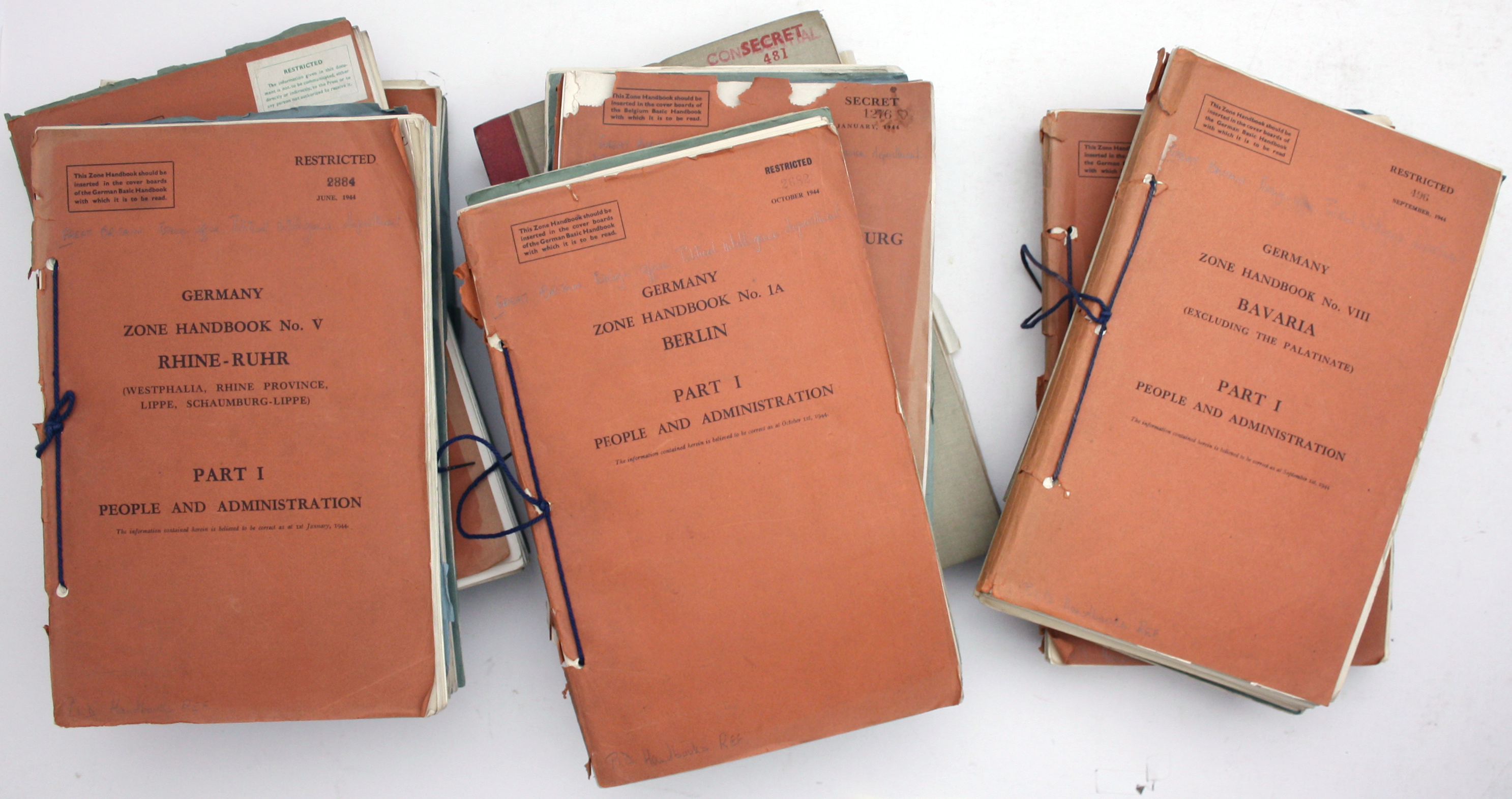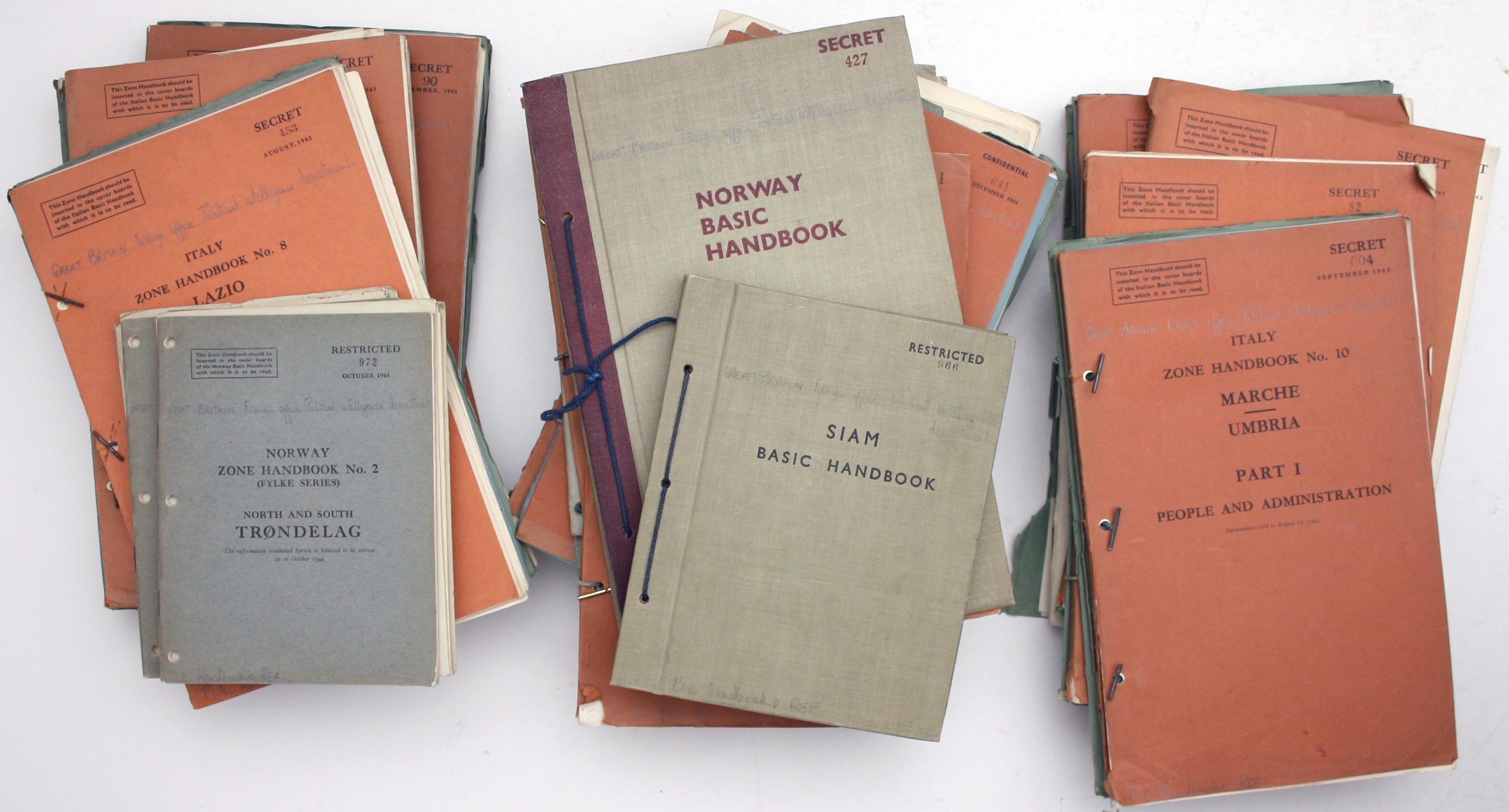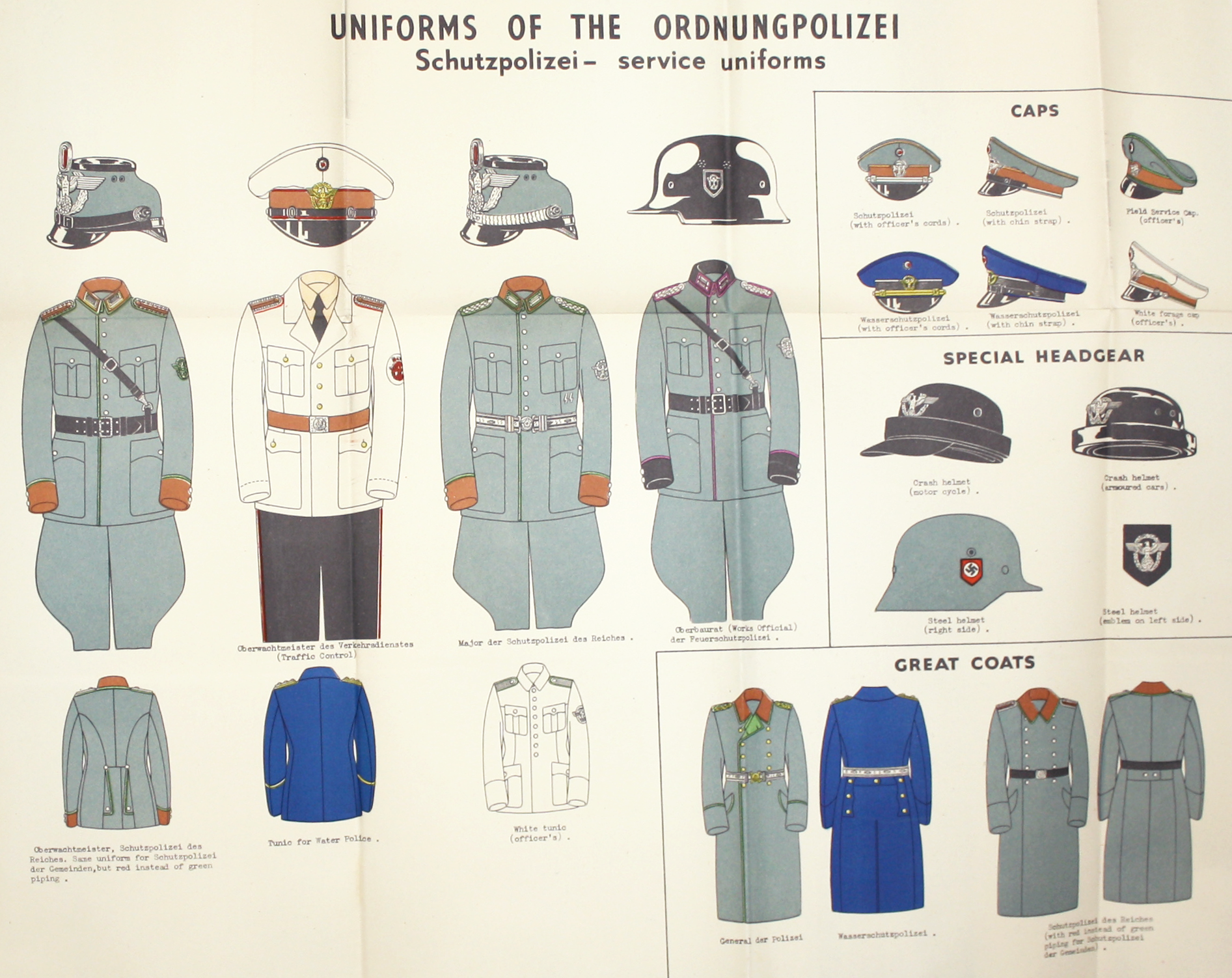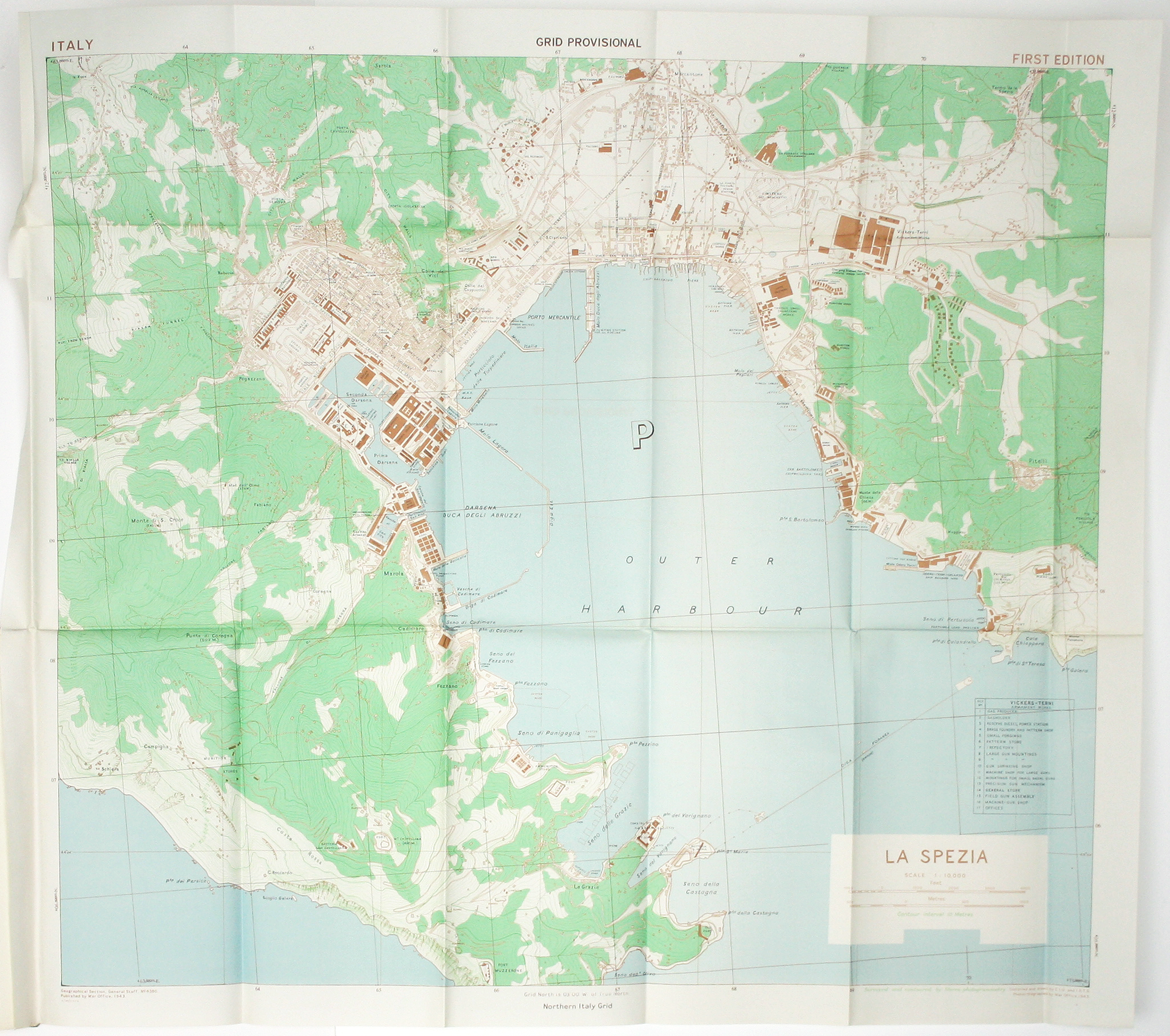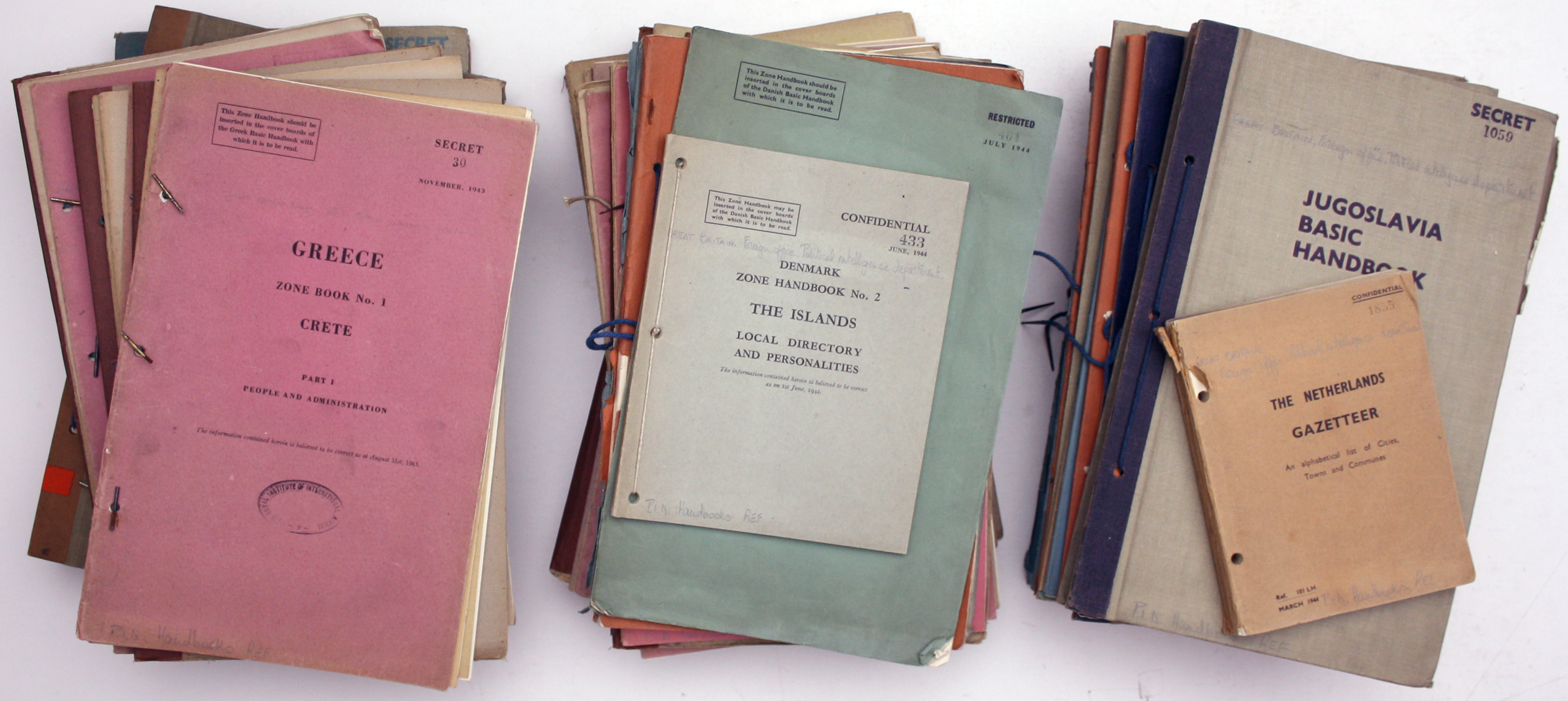
The Ministry of Economic Warfare: A Collection of Handbooks for Enemy & Occupied Countries
SKU: 9427
Title:
The Ministry of Economic Warfare: A Collection of Handbooks for Enemy & Occupied Countries
Date of publication:
Colour:
Mapmaker:
This is a collection of 61 intelligence handbooks, 1943-1945, covering enemy and occupied countries and compiled by the Foreign Office and Ministry for Economic Warfare.
The MoEW was formed in September 1939 and worked closely with the FO, which took over its remaining functions at the end of the war. Members of the Royal Institute of International Affairs (Chatham House) supplied the FO with some of the detailed historical and political background which appears in these volumes. Read more
The MoEW also had oversight of SOE. After America's entry into the war there seems to have been close co-operation with the US Board of Economic Warfare, and the Economic Warfare Department which was established by the Americans in London and based in Berkeley Square like the MoEW itself. This range of contributors informs the breadth and diversity of content, including the maps, which range from re-purposed pre-war tourist maps, British War Office GSGS maps and maps supplied by the American OSS.
'Basic' handbooks introduce a country, backed by 'zone handbooks' with regional detail, and other appendices often including a 'who's who' of local figures. The handbooks are bound using treasury tags, enabling sections to be added, removed or updated with ease. Some are contained within boards, some in printed wrappers.
The MoEW was charged with bringing the war to the Axis by any means possible, 'setting Europe ablaze' in Churchill's words. This included informing and sometimes directing operational planning (clandestine operations such as those mounted by SOE; bombing of key military and industrial targets; planning for the invasion of Europe), propaganda, and increasingly toward the end of the war, the administration and rebuilding of liberated and occupied enemy territories, and the rebuilding of Britain's trade networks postwar. This series of handbooks was compiled from April 1943 onward, at the request of the Joint Intelligence Committee, when invasion planning was the primary concern.
Classified as secret or confidential (up or downgraded on the covers, presumably depending on revisions to the content) this comprehensive and monumental undertaking reflects official British understanding and thinking, rather than an exercise in propaganda. This includes an indication of the state of contemporary, officially recognised, knowledge of the persecution of Jewish people and nature of the concentration camps, the extent of collaboration and resistance in occupied countries, forced sterilisation and other aspects of Nazi eugenics programmes and Gestapo torture methods.
Agricultural and industrial output, essential to the war effort, is covered in meticulous detail (again, to the best of Allied intelligence), from wine-making to ball-bearing and aero-engine production. Transport, power and water supply, local government structures and anything else which might be of value, from pension provision to the addresses of local brothels rate the same careful treatment.
Countries and regions are provided with sweeping historical introductions, often covering the period from antiquity to recent 20th century politics. Discussions of recent events such as Anschluss often appear more nuanced than anything which would have been publicly permissible during the war, or indeed afterwards. Most handbooks also include a section with pen portraits of local character types, often highly anecdotal and subjective, and written in the best traditions of the FO, which supplied the core of MoEW staff.
The anecdotal nature of some of the information strongly suggests a basis in agents' reports (as well as intercepts, captured/smuggled newspapers and other documents). By 1943 SOE had been partially re-invented as an intelligence agency. Intelligence gathering had become at least as important as support of resistance activities, including sabotage, and the results can be read here.
We have 61 volumes which comprise: Germany (6); Austria (1); Italy (17); Greece (9); France (10); Belgium (5); Netherlands (3); Norway (3); Denmark (3); Hungary, Bulgaria, Yugoslavia, Siam. A full list is available on request. Most volumes have the ink stamp of the Royal Institute of International Affairs (Chatham House). Other ink stamps include CASC (presumably Canadian Army Service Corps).
The books were disposed of by the library about 40 years ago and acquired en bloc by an academic. Condition is generally good, although there are signs of use and occasional water damage (eg. Germany basic handbook; Italy zone handbook 6, Campania). Most volumes appear to be complete, but owing to the nature and purpose of the binding, some maps and sections may have been removed. For example, In part two of the Jugoslavia basic handbook (stamped 'secret', August 1943) the whole of chapter 4, on partisans, is missing. It may have been considered too sensitive for circulation with our copy. Conversely, in one or two cases sheets from different editions have been retained side by side rather than discarded, and it is possible to observe the development of the intelligence picture as it evolved. For example, knowledge of German-backed Breton collaborationist, regionalist or autonomist movements was greatly expanded between the editions of September 1943 and June 1944 (France Zone Handbook 8, Rennes). The later edition contains far more information about individuals, and Strolladour-Stourem, an 'ineffectual' militia dressed in black (with white ties) and armed with camping knives.
Some information is conspicuous by its absence. Although published in 1944, after Operation Gunnerside and other sabotage efforts involving SOE, the Norway handbook makes only a passing reference to heavy water; atomic energy was another highly sensitive topic. In other cases, knowledge may have been genuinely limited. For example, there seems to have been no appreciation of the extent of the involvement of subsidiaries of IG Farben in the Holocaust.
There are extensive references throughout to the treatment of Jewish people and to the fate of Jews, other minorities and political prisoners who were transported to labour camps and death camps, or subjected to forced labour. As late as April 1944 the MoEW authors could only note that 'little concrete information is available about the administration or even the number and location of concentration camps', despite attempts to compile information from various sources, 'some of them secret in nature' (Germany basic, chapter 6, p. 152). However, a detailed appendix dated April 1945 gives a thorough summary of the information which had become available subsequently, including an 11 page list of known camps in Greater Germany, their function and capacity ('not to be considered exhaustive') and a description of 'groups' and identifying 'group badges' organised by camp and category of prisoner, and even a section on the recruitment of camp personnel. It was prepared immediately before the British liberation of Bergen-Belsen and relies primarily on Soviet sources.
As with the text, the maps and other illustrations (for example, insignia and uniform) are of variable quality; this is especially so with the maps: some are little more than reproductions from pre-war Baedekers. However, many contain information which would not have been widely available; the black and white sketch map of German Luftgaue (air districts) is not technically accomplished, but is marked secret. Many maps are tremendously detailed. For example, the GSGS map of Lorient shows the submarine pens (it was the largest U-boat base) and the plan of La Spezia prepared by the Interservices Topographical Department (ISTD), depicts the MAS base, from which Italian motor torpedo boats harried Allied shipping in the Mediterranean.
The March 1945 volume on Siam stands apart in terms of substance as well as geography. Unlike the European volumes, it was undertaken without significant American input. Michael Foot explained: 'American trust in Stalin as a democrat and suspicion of Churchill as an imperialist continued to colour OSS's attitudes, particularly in Siam where OSS and SOE were more at war with each other than the Japanese'. Foot: SOE, The Special Operations Executive 1940-1946, 1984, p. 151. The volume details wartime relations between Siam and Japan (the one-sided 'alliance' and 'cultural pact'), including reports of local disaffection with a 'corrupt and dictatorial' Japanese military. It also covers support for the Indian independence movement, including local volunteers for the INA and the establishment of an INA training camp. Discussion of western internees and prisoners of war makes a nuanced distinction between the treatment meted out by the Japanese and Siamese. The new Siamese government was formed with Japanese acquiescence but described as being, on the whole, 'a good augury'.
Nuance is a feature of the whole project. In secret, the authors could pass judgements which frequently run counter to official propaganda. The Mohne Dam, breached in the Dambusters raid, 'was of no importance as an economic objective'. Not all Nazis were bad. Alexander von Falkenhausen (military governor of Belgium) was described as a 'very lenient, gentlemanly figure of good character' who was potentially 'hostile to the Nazi regime…. in conflict with Gestapo chiefs'. In this instance the judgement seems to have been sound: Falkenhausen was implicated in the July 1944 bomb plot and spent the rest of the war in concentration camps.
The reports are nuanced but remain highly subjective, including some sweeping generalisations about national and regional characteristics. Bavarians, 'if a rough generalisation is permissible', have a love of mimicry and are 'capable of violent rage and sulky obstinacy'. The 'Dusseldorfer is a pleasure seeker to the point of frivolity' whereas the typical Westphalian is 'fundamentally slow, both mentally and in his actions'. Corsicans are 'honest and sober, though jealous and quick tempered'. At times the authors seem to become a little overheated: 'There is no such thing in Crete as a regular vendetta of the Albanian type, whereby each family is morally bound to avenge the death of one of its members. Cretan feuds resemble rather the celebrated Kentucky feuds. There are no strict rules and they are confined to the wilder and more lawless parts of the island… ' If aspects of the reports contain lacunae or appear with hindsight to be of questionable utility, this should not distract from the overall achievement: an astonishing feat of organisation and interpretation of material compiled from a tremendous array of sources, continually revised and updated, obtained through a combination of ingenuity and personal risk, any part of which may well have proved of value to the Allied war effort. Read less


